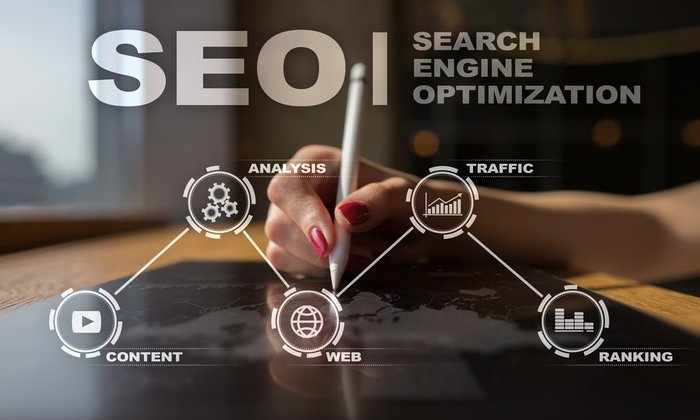During the period from 19 to 20 years when Xiao Zhang’s father was hospitalized, Xiao Zhang and his family bought medicines at the pharmacy on the first floor of the hospital according to the doctor’s prescription, and spent a total of 524,955 yuan, all at their own expense.
These self-paid drugs include Fengweiling, albumin, amphotericin B, gamma globulin (intravenous human immunoglobulin), and so on.
Later, Xiao Zhang accidentally discovered that Fengweiling, albumin, and other drugs are actually in the medical insurance catalog. At the same time, he also found out that the shareholder of the pharmacy is the hospital itself, so he went to the hospital to ask if it could be reimbursed by medical insurance, but he never got a positive result. In response, he complained to the local health and health commission.
Unfortunately, the reimbursement issue was not resolved in the end, but my father passed away due to the deterioration of his condition.
Looking at this, it is very sad, and there is a hint of helplessness. But today I still want to talk to you about why some medicines cannot be bought in social security.
Why is the life-saving medicine in the medical insurance, but can’t buy it?
Drugs covered by social security have to be purchased at their expense
What Zhang thinks is difficult to understand is not an exception.
Of course, it does not mean that there is no problem, but it is still a bit complicated.
Let’s first listen to two words: drug proportion and total control.
1. “Drug Proportion“
The proportion of medicines is the proportion of the cost of buying medicines to the total cost in the process of medical treatment. The proportion of medicines has become an assessment indicator for many departments. Once it exceeds the standard, it will affect the performance of front-line doctors. The original intention is still good. To prevent over-medication, such an assessment indicator has been set. Otherwise, it would not be a good experience to simply look at a cold and go back with a pile of medicines.
But during execution, optimization is also required.
For example, the price of a single medication of Fengweiling is about 2,000 yuan, and doctors will have some scruples when taking medication.
Why is the life-saving medicine in the medical insurance, but can’t buy it?
But if it is purchased from a pharmacy, it is an outsourced drug, and it has nothing to do with the proportion of drugs.
For some more expensive medicines, there will be some standard medication conditions to prevent random prescribing.
For example, the albumin used by Xiao Zhang’s father, the medical insurance catalogue of Jiangsu Province limits the applicable diseases: it must be less than 30mg/l before it can be prescribed.
Why is the life-saving medicine in the medical insurance, but can’t buy it?
Regarding how serious this indicator is, I asked my doctor friend.
The original words given to me are: it belongs to the more cautious standard. (I understand the subtext is serious)
The patient’s situation varies from person to person, and some people may need medication above this indicator.
There are ill-considered solutions across the board, but there is no better way for the time being.
It may be possible to refer to the treatment of anticancer drugs.
A few years ago, after “I’m not the God of Medicine”, several anticancer drugs have been included in the scope of medical insurance.
As a result, some people found that after entering the medical insurance, they could not buy it. Later, the situation improved after a policy was issued, announcing that some anticancer drugs were not subject to restrictions on the proportion of drugs and total control of medical insurance costs. But high-priced drugs are not limited to anti-cancer drugs, so several of the drugs in the event were out of scope.
2. Total Control
The total amount of control is for each type of disease. When applying for medical insurance, the medical insurance subsidy is issued according to the unified total amount. Each hospital has a certain medical insurance limit, which we can regard as a stock pool. The total amount of this medical insurance fund is so large that everyone needs to use it. For the same amount of money, buying expensive medicine can save one person, and buying ordinary medicine can save dozens of people?
How to choose this?
Human life is priceless, and this answer is inexplicable. Maybe feel that dozens of people should be saved. But if the person waiting for treatment is you or your family, will your thoughts change? I hope I don’t encounter this kind of troublesome problem.
From the original intention of the establishment of medical insurance, it still tends to focus on basic insurance.
However, given the existing shortcomings, it has now been improved.
In 2017, the General Office of the State Council issued the “Guiding Opinions on Further Deepening the Reform of Basic Medical Insurance Payment Methods”.
Among them, it is pointed out that regions with conditions can actively explore the combination of the point method with total budget management, payment by disease, etc., and gradually use regional (or within a certain range) total control of medical insurance funds to replace the total control of specific medical institutions.
Hope it gets better and better, we will wait and see.
Why is the life-saving medicine in the medical insurance, but can’t buy it?
The hospital’s pot or the social security pot
To put this matter into perspective, it may be essentially a question of money.
In 2016, The Lancet also counted the medical expenses of common cancer patients in 37 tertiary hospitals in 13 provinces and cities in China: the average expenditure of nearly 15,000 cancer patients was as high as 9,739 US dollars, and the annual family income of these patients was only 8,607 US dollars.
This means that as long as one of these families suffers from cancer, the whole family can barely cover the patient’s medical expenses without eating or drinking for a whole year.
The market price of some medicines is so expensive that someone has to pay for the medicines.
If you don’t pay for medical insurance, the patient will have to pay for it.
If you enter the medical insurance, then the money must be paid out by the medical insurance. Exceeding the proportion of medicine may be deducted from the bonus of the department. If it exceeds the total control, the money has to be paid by the hospital.
Where does the health insurance money come from?
Under the current social security system, both companies and employees have to pay for medical insurance, but only the money paid by the company goes into the medical insurance pooling account; the money paid by individuals goes to their accounts.
Let the enterprise pay the bill, which is ultimately reflected in the commodity price, and then the whole social security pays the bill and then goes back.
Can we control high-priced drugs from the source and lower the price?
Like the previous medical insurance negotiation, the blockbuster new tumor drug PD-1 entered the medical insurance catalog with a price drop of nearly 80%, which greatly reduced the burden on tumor patients.
The problem is not so simple.
For a drug, the production cost may not be expensive, but the research and development cost is huge.
Why is the life-saving medicine in the medical insurance, but can’t buy it?
Before, 700,000 pieces of the sky-high drug Nosinagen Sodium Injection were on the hot search.
This is a special drug for the treatment of the rare disease Spinal Muscular Atrophy (SMA), and the patient must re-inject it every four months. million.
And the research and development costs behind it are probably billions of dollars. This is still successful in research and development, but don’t forget that there are still many drugs, and the research and development costs are invested in and there is no output at all.
There is a saying in China, “Those who hold wages for everyone should not freeze to death in the wind and snow”.
The interests of pharmaceutical companies are not guaranteed, and no one develops new drugs, which is not a result that everyone is happy to see. Thinking back to the past, cheap and effective cheap drugs are becoming less and less visible?
Why is the life-saving medicine in the medical insurance, but can’t buy it?
How to balance the distribution of benefits as a whole is too big a subject and completely beyond my cognitive ability. But for ordinary people, to break through the predicament and avoid a tragedy like Xiao Zhang, there are two seemingly simple ways.
One is to make enough money.
The second is to transfer the money through commercial insurance and let the insurance company pay the money.
There’s nothing to say, it’s up to you.
Second, the money is ultimately shared by everyone.
But compared with raising social security contributions and letting the whole society pay the bill, there are two differences:
1. Not mandatory
Those who are willing to transfer risk through commercial insurance spend money; those who are unwilling do not.
This is easy for everyone to accept.
2. Better protection
Social security is the basic guarantee, covering a wide range, allowing more people to participate.
The coverage of commercial insurance can be customized to meet different needs.
For example, in the example at the beginning, commercial insurance covering the protection of outsourced medicines can solve this problem.
To say a few more words, because there are such practical problems, and there is no solution that can be properly solved in a short period, I suggest that the protection of purchased medicines is better to bring when purchasing medical insurance.
And it’s not enough to take it with you. To prevent abuse, there are generally several conditions. You must also pay attention when using it:
1) Requires the approval of eligible hospitals and doctors to issue a prescription:
Usually, a public hospital above the second level is enough; after the prescription is issued, it is best to make a copy and take a photo to keep it on file to prevent loss and make another trip.
2) Before prescribing the medicine, it is best to explain the insurance situation to the doctor, and whether the rationality and necessity of the medicine can be explained:
Sometimes the doctor is also kind and chooses medicines that have similar effects but are cheaper for you. After the cost is covered by insurance, the efficacy can be given priority.
3) Outsourced drugs and pharmacies must meet the requirements of insurance companies:
It is best to confirm with the insurance company before taking the medicine! Some insurance companies can also provide direct payment services. You do not need to pay for purchases at designated pharmacies, and the insurance company will settle the bill directly with the pharmacy.
4) The medical records and prescriptions of the hospital and the invoices and lists of the pharmacies must be kept and prepared for reimbursement!





